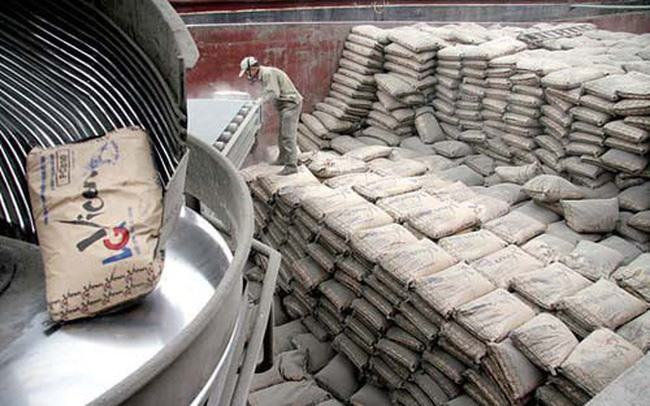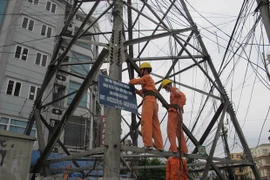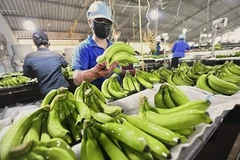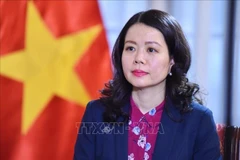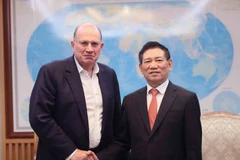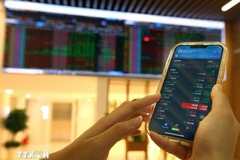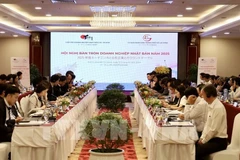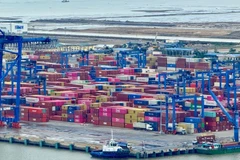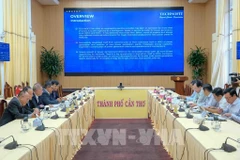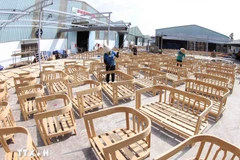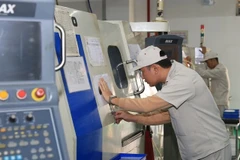Vietnam Cement Industry Corporation (VICEM) But Son announced it would increasethe price of its cement by 30,000 VND (1.29 USD) per tonne immediately afterthe power price increase.
Do Tien Trinh, VICEM But Son’s General Director, said that in addition to theelectricity tariff hike of 8.36 percent, the price of coal sold to cementproducers also increased by 2.3 to 5.8 percent depending on the kind of coals.
The coal price increase came because electricity accounts for 10 percent ofproduction cost. In addition, the Vietnam National Coal and Minerals IndustryHolding Group (Vinacomin) has not provided enough coal to cement producers,making them import the product at high prices.
Trinh said the firm could not afford to offset the rise in input costs and hadto increase retail prices to ensure sustainable production.
VICEM Tam Diep Company also had the same increase in the selling price.
According to Pham Van Minh, the company’s general director, no business wantsto increase retail prices, but electricity and coal make up a big portion ofinput material costs for cement production.
Cong Thanh Cement Joint Stock Company in the central region did not raise itsretail prices but is charging distributors 30,000 more per tonne.
Nguyen Quang Cung, Chairman of the Vietnam Cement Association, said cementproducers were not surprised by the power tariff hike and had been preparingfor the change.
Its calculations showed if the electricity price was increased by 8.36 percent,cement production cost would rise by 14,000 VND to 15,000 VND per tonne.
Steel producers also said they would increase their selling prices.
SSE Steel Company said it doubled its steel selling price to 200,000 VND per tonne,while Thai Nguyen Steel and Iron Corporation (Tisco) increased its sellingprices by 150,000 VND to 200,000 VND per tonnes.
The Vietnam Steel Association said it was unavoidable for steel producers toraise their prices as power accounted for 8 to 9 percent of total productioncosts. In addition, the import prices of iron ore and steel billets were alsorising this year, affecting steel production costs.
Nguyen Anh Tuan, head of the Electricity Regulatory Authority of Vietnam (ERAV)under the Ministry of Industry and Trade (MoIT) told a press meeting last weekthat there were about 1.4 million manufacturing businesses in Vietnam who spendon average 12.39 million VND per month on electricity. The average increase intheir power bills would be 870,000 VND a month.
While electricity prices have almost doubled in the last decade, the MoIT said Vietnam’selectricity prices were 8.1 percent lower than that of China and India, 18 percentlower than Laos and 26.5 percent lower than Indonesia. Even with the latestincrease, the prices would only be on par with China and India.
“Vietnam’s electricity prices are lower than other countries. It is the reasonthat foreign investors are not interested in investing in electricity projectsin the country,” said deputy minister Hoang Quoc Vuong.
However, chief economist of the Bank for Investment and Development of Vietnam(BIDV) Can Van Luc suggested the Government needs to eliminatecross-subsidising mechanisms for units using electricity.
At present, industrial sectors consuming large amounts of electricity,accounting for 55 percent of electricity density, such as cement, iron andsteel, are being compensated for electricity prices and only subject to thelowest price of 6.8 cents per kWh. Meanwhile, electricity costs households 8.7cents per kWh.
“Currently, consumers using electricity for domestic use as well as serviceenterprises are compensating a certain amount for industrial productionenterprises – that is unfair. When there is fairness, people and businesseswill agree and are willing to pay more reasonable electricity prices,” Luc said.— VNS/VNA
